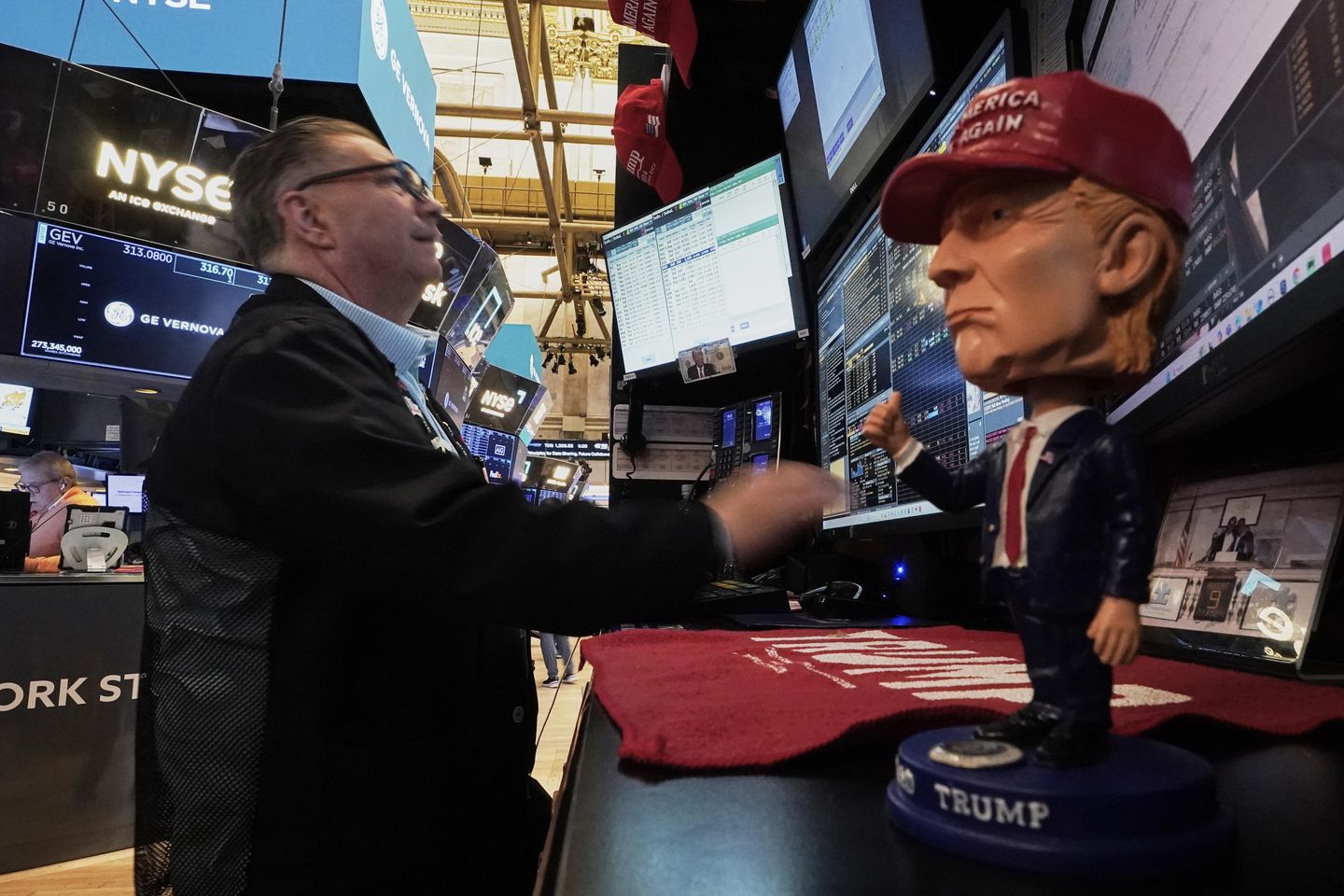
The White House on Tuesday said it’s making “a lot of progress” in reducing trade barriers through bilateral deals with nations, pointing to over a dozen written proposals and a recent breakthrough with India.
Wall Street stocks rebounded from a massive selloff one day earlier, opening and remaining in positive territory as President Trump’s press secretary, Karoline Leavitt, pointed to positive strides and Treasury Secretary Scott Bessent told investors he expects a “de-escalation” in the trade war with China.
“There is a lot of progress being made. We now have 18 proposals on paper that have been brought to the trade team,” Ms. Leavitt said. “We are moving at Trump speed to ensure these deals are made on behalf of their workers and the American people.”
She pointed to Vice President J.D. Vance’s work with Indian Prime Minister Narendra Modi on Monday to establish a road map for a bilateral trade agreement, calling it a “big deal.”
Mr. Trump has said trade talks with other nations, including Japan, are going well and will pay off. On Tuesday, he said he spoke with Israeli Prime Minister Benjamin Netanyahu about trade and other subjects and they “are on the same side of every issue.”
Mr. Trump shocked the world on April 2 by announcing a blanket 10% tariff on all imports and higher levies on dozens of nations that sell plenty of products to U.S. consumers but don’t buy nearly as much from American producers.
Tariffs are a tax or duty paid by importers on the goods they bring in from foreign markets.
Mr. Trump says tariffs are a great way to force companies to return to America or keep their operations in the U.S., employ American workers and create revenue to fund domestic programs.
Foreign countries don’t pay the tariffs directly to the U.S. Treasury. In many cases, U.S. companies will pay the levies, and they might pass on at least some of the cost to consumers through higher prices.
The administration has said that making major adjustments to the trade landscape will take time and cause turbulence in the meantime. For now, the economic indicators are daunting.
The International Monetary Fund slashed its 2025 growth forecast for the U.S. economy to 1.8%, a 0.9-point decrease from January.
The IMF’s World Economic Outlook report focused heavily on Mr. Trump’s tariff plan, calling it “a major negative shock to growth.”
The report offered a “reference forecast” based on information available as of April 4 so it would incorporate Mr. Trump’s announcement on April 2 but may not account for the 90-day pause in reciprocal tariffs and exclusions to hefty Chinese tariffs for certain electronics.
“The April 2 Rose Garden announcement forced us to jettison our projections — nearly finalized at that point — and compress a production cycle that usually takes more than two months into less than 10 days,” IMF chief economist Pierre-Olivier Gourinchas said.
The outlook also slashed its global growth forecast to 2.8%, a 0.5-point decrease from its earlier estimate.
Wall Street markets tumbled Monday after Mr. Trump ramped up attacks on Fed Chair Jerome Powell, dubbing him a “major loser” who’s been slow to cut interest rates.
“The president has the right to express his displeasure with the Fed,” Ms. Leavitt said Tuesday. “He has the right to say he believes interest rates should be lower. He believes Americans should be able to borrow money [for] cheaper than they currently are right now.”
Major stock indexes rebounded into the green Tuesday, buoyed in part by a CNBC report that Mr. Bessent predicted a thaw with China.
The secretary told a private JPMorgan Chase summit that “no one thinks the current status quo is sustainable.”
China is imposing a 125% tariff on American goods, while Mr. Trump slapped a 145% levy on most Chinese products entering the U.S.
The White House said the president’s heavy tactics will win out, given the spending power of Americans.
“The entire world knows that they need the United States of America, and they want to do business here, and so we’ll stay focused on cutting good trade deals on behalf of the American worker,” Ms. Leavitt said.


![NYC Tourist Helicopter Falls into Hudson River, Siemens Executive and Family Among Those Killed [WATCH]](https://www.right2024.com/wp-content/uploads/2025/04/NYC-Tourist-Helicopter-Falls-into-Hudson-River-Siemens-Executive-and-350x250.jpg)
![Biden Drops Racial Slur During First Public Speech Since Leaving Office [WATCH]](https://www.right2024.com/wp-content/uploads/2025/04/Biden-Drops-Racial-Slur-During-First-Public-Speech-Since-Leaving-350x250.jpg)




![Green Day’s Cringe Trump Diss Ends in Fire and Evacuation [WATCH]](https://www.right2024.com/wp-content/uploads/2025/04/Green-Days-Cringe-Trump-Diss-Ends-in-Fire-and-Evacuation-350x250.jpg)
![Red Sox Fan Makes the ‘Catch of the Day’ with Unconventional ‘Glove’ [WATCH]](https://www.right2024.com/wp-content/uploads/2025/04/Red-Sox-Fan-Makes-the-‘Catch-of-the-Day-with-350x250.jpg)
![Bikini Clad Spring Breakers Prove Our Education System is Failing Students [WATCH]](https://www.right2024.com/wp-content/uploads/2025/03/Bikini-Clad-Spring-Breakers-Prove-Our-Education-System-is-Failing-350x250.jpg)




